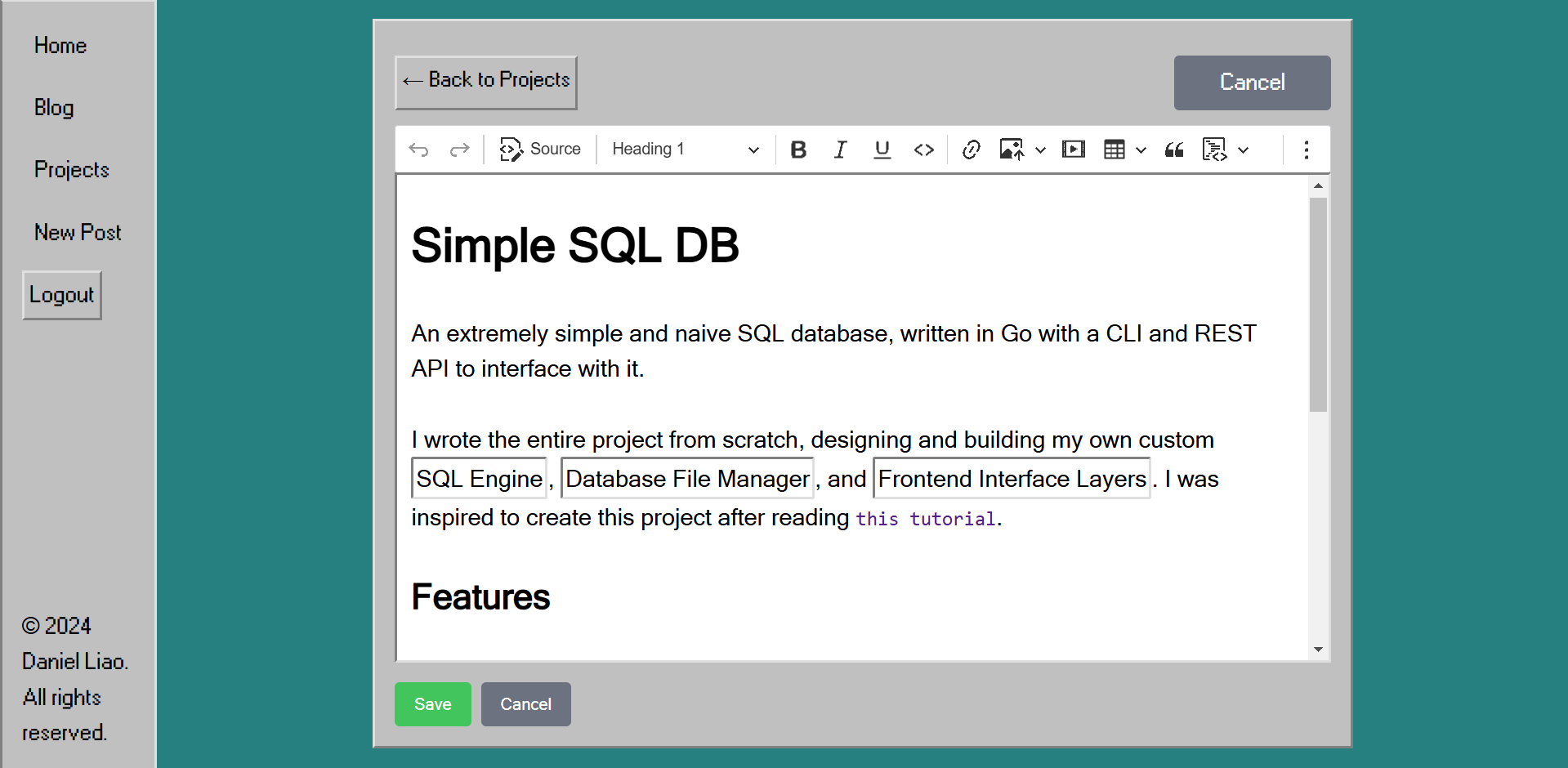Most personal websites these days are sleek, modern, and minimalistic. I decided to stray from this a little and themed it after Windows 98. As an extra challenge, I decided to use Jinja and Flask instead of a Javascript frontend framework.
You can view this website at https://daniel-liao.com, you might even be reading this on my personal website!
My Blog (https://daniel-liao.com/blog)
I post semi-regularly here about anything that comes up, I write my posts using a WYSIWYG editor built into the website:
Internally, the HTML template for the blog endpoint is flexible to be used for any list of time-sorted rich-text content, and I can easily create blogs of different topics hosted at different endpoints.
My GitHub Projects (https://daniel-liao.com/projects)
You can view all my public GitHub projects that have at least 1 star here. With each project, you can click on the View More Info button to view the README.md of that repo directly from the browser. An admin (me), can also edit the README.md directly from the browser and commit to GitHub on save:
I've had a lot of experience building websites / webapps using JS frontend frameworks (React, SvelteKit, and Next.js), but I haven't really built one using “traditional” technologies such as HTML templates and a web server since I started learning programming.
So, I set out to built a complete webapp using these technologies. I got a better understanding of what the default behavior of HTML elements are, as opposed to just slapping event.preventDefault() on every callback. I also became far more familiar with HTML form design patterns such as POST-REDIRECT-GET and using hidden inputs, these are patterns that have become irrelevant with mostly client-side rendered apps using AJAX.

